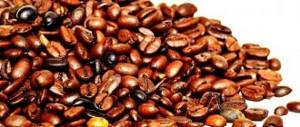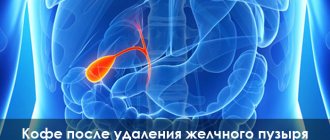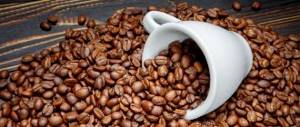The amount of caffeine in tea: what it depends on
Not only are alkaloids present in coffee blends, but natural tea leaves also contain them. The percentage of substrate they contain depends on many factors, such as variety, quality, preparation method and brewing time. The level of saturation ranges from negligible to quite impressive.
To a large extent, this depends on how selected the raw materials are chosen when manufacturing the product. The highest percentage falls on the top leaves, and as it decreases, the concentration of invigorating elements also decreases. On the lowest growing shoots there is less than 1%. You can easily recognize a good product on a store shelf - products made from tall-growing leaves are much more expensive than their analogues. For example, in “An Ji Bai Tea”, consisting only of the top leaves and buds, the caffeine content will be much higher than, for example, in the usual “Gunpowder”. So-called decaf teas are produced using the outermost leaves. It is worth noting that they also have their own percentage, although very small.
To understand whether tea or coffee has more caffeine, you need to know how the raw materials are processed. The fewer processing cycles it goes through, the better the product retains vitamins and other components, and the more intensely the elements that stimulate the nervous system are released. Based on this, we can conclude that the most saturated are green varieties, because they are the least processed. One serving can contain between 50 and 80 milligrams, which is almost more significant than the black varieties. These data show that green does not always mean a less dangerous and healthier product.
Why then do tea and coffee act differently?
Let’s say there is only one molecule, but then a reasonable question arises about the difference in the effect produced. Coffee is considered a stimulant, while tea is considered a stimulant. If both contain the same substance, why does it manifest itself so differently?
The answer to this question is based on three factors - the number of molecules, the rate of absorption and the individual tolerance of our body.
1. The concentration of caffeine molecules in coffee is three to four times higher than in tea.
Although initially there is more caffeine in the tea leaf than in the coffee bean, the degree of caffeine from the two ready-made drinks is higher (caffeine is extracted from ground beans better than from leaves). By the way, the concentration also depends on the type of tea, but not so significantly: the final amount of caffeine in your cup consists of the infusion time, the fraction of the leaf and its ability to release caffeine molecules. So, for example, in tea that has been steeped for 5 minutes, there will always be more of this substance than in tea that has been brewed for 1 or 2 minutes. Black tea releases caffeine faster than white tea, and whole leaves release it more slowly than crushed leaves.
2. Although theine and caffeine molecules are absolutely identical, they can be associated with other substances in the drink, and their breakdown in our body occurs at different rates.
The molecules of coffee beans are much looser than those of tea and are not bound to other substances. They are well absorbed by the body and therefore enter our circulatory system much faster. This is why we feel the effects of coffee so vividly.
Ground coffee Lebo “Prince”, for Turkish, 100 g 79 rub.
Coffee beans LavAzza “Qualita Oro”, 500 g 752 rub.
Ground coffee Lavazza “Crema e Gusto”, 250 g 258 rub.
Lavazza “Qualita Oro” coffee beans, 250 g 351 rub.
Ground coffee Lebo “Extra”, for Turkish, 75 g 61 rub.
Ground coffee Lavazza “Qualita Oro”, in a tin can, 250 g 400 rub.
Bean coffee Bushido “Red Katana”, 1000 g 1921 rub.
Coffee beans Lavazza “Qualita Oro”, 1000 g 1550 rub.
Choose coffee on TEA.ru
In the case of theine, the opposite is true. Theine molecules are typically bound to other substances found only in tea, and the body needs to break these bonds before the theine can be absorbed. This is why tea affects us longer and more gently.
3. We are all different, so our reaction to either of these two drinks may vary unpredictably.
Some people are more sensitive to coffee, while others are more sensitive to tea. The only way to know which of these drinks affects you more is to simply try them and compare.

Cooking method also matters
Regardless of the grade, the level of caffeine alkaloid can be increased or decreased by brewing technique. It is released much more strongly from the mixture when high-temperature water is used. If you use a liquid that is not too hot, most of it is retained in the sheets. But this only works with green varieties; black cannot be cooked without boiling water, so it turns out more rich.
Concentration is of great importance: the more poured into the cup, the higher the level of active elements. The optimal amount for green is 4-7 grams per serving, and for black it is half as much. Although a lot depends on the leaves, many popular brands have different percentages for the same volume. The strength will be much lower if the composition contains many flavors.
Useful data
Initially, it was believed that the leaves and grains contained various tonic substances. In the first, alkaloids-tannins were isolated, and in the second, a full-fledged alkaloid-caffeine. Active tannins were discovered in tea leaves back in the 19th century, and were classified as a separate species.
Only 100 years later, scientists came to the conclusion that this is the same coffee alkaloid. But the effect on the body was different, so studies were conducted to find the reason for this difference. It turned out that “coffee” human activity is shorter, but more intense than “tea” activity. The brewed grains have a short-term stimulating effect, while the leaves are tonic for a long period of time, and in addition remove thirst and refresh. Thanks to these properties, tea drinking traditions have been popular throughout the world for thousands of years.
Useful information about tea caffeine
The caffeine contained in tea and coffee is a significant difference between them. And this is due to a number of factors.
The tonic crystals that make up the tea are scientifically called tannin. It was discovered at the beginning of the 19th century and was initially classified as a separate group of alkaloids. Only a century later, pure caffeine was extracted from tea leaves, and a few years later they came to the conclusion that it is the same as tannin. This finding led to the conclusion that tea and coffee contain the same caffeine. At the same time, the effect of drinks on the body is different, which means that something changes the effect of alkaloids.
You may be interested in: Hanging coffee - caring for your neighbor
Over time, it turned out that the tannin in tea leaves partially blocks the effect of caffeine, so the effect of espresso, for example, and a Lipton cup varies. Drinking a cup of coffee makes a person feel cheerful, energetic and even happy. The sensation lasts about 30-40 minutes of caffeine action. After tea, the effect of invigoration is longer lasting, even despite the high level of concentration in the first drink.
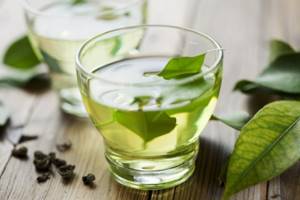
Unlike coffee beans brewed in one way or another, tea is perfectly refreshing and helps to invigorate, quenching thirst. It is not for nothing that in some countries the tea drinking ceremony is a national tradition that has not become obsolete even after the discovery of the properties of coffee.
Where is the concentration higher: in tea leaves or coffee beans
If you consciously and moderately consume caffeine-containing products, their effect on the body will be positive. The main problem is that their impact on each person can vary significantly, depending on the individual and the condition. For some, half a cup of cappuccino is enough to cheer them up; for others, even two stronger espressos will not feel the effect. Therefore, it is necessary to understand the actual content of the stimulating elements in each type.
Find out how much caffeine is in a cup of tea and coffee from the detailed table below:
| Name | Cup volume in ml. | Content in mg. | |
| Coffee | Ground | 250 | 100-200 |
| Soluble | 80-100 | ||
| Decaf | 3-5 | ||
| Tea | Black | 45 | |
| Green | 70 | ||
What drinks can be replaced
Ivan tea contains a minimal amount of alkaloids, but has a whole list of useful components. All of them have a beneficial effect on human health. The level of vitamins C and B in the mixture based on this plant is very high (even compared to oranges, lemon and other traditional sources). The composition also contains quickly digestible proteins, and the percentage of harmful acids (purine, uric, oxalic and others) is extremely low.
Other non-alkaloid herbal mixtures (based on linden and chamomile) also have beneficial properties, and their use has a positive effect on a person’s physical condition. You can prepare them yourself or purchase them at a pharmacy or specialty store. The search for alternative invigorating blends is simply necessary when the daily dose of consumption approaches the 1000 mark.
You can also highlight special products that are manufactured using the decaffeination procedure. These are ordinary mixtures with a minimum percentage of content. Some of the representatives of this line differ slightly in taste characteristics, and also have identical aroma and color. The cost and quality of a particular product will influence the product’s compliance with the classic options.
What effect does it have on the human body?
As we have already said, the concentration in the finished coffee product depends on the brewing time. The longer the extraction takes place, the higher the percentage of alkaloid elements extracted. A person uses this to stimulate the nervous system and gain new strength. In people under such influence, an increase in heart rate, constriction of blood vessels, and acceleration of the pulse are observed. But the beneficial effect cannot be separated from the side effects, so you need to monitor the dosage of consumption. Exceeding the recommended dose of 4 g can negatively affect the functioning of the heart muscle and other internal organs.
Caffeine content in tea and coffee - comparison table
| Name | Serving (ml/g) | Average content (mg) | |||
| Coffee | Natural | 250 | 170 | ||
| Soluble | 100 | ||||
| Decaf | 5 | ||||
| Espresso | 30 | 50 | |||
| Tea | Black | 250 | 45 | ||
| White | 55 | ||||
| Green | 70 | ||||
| Energetik | 85 | ||||
| Chocolate (dark) | 100 | 40 | |||
| Chocolate ice cream | 35 | ||||
| Lemonades and soda | 330 | 35 | |||
| Iced tea in bottles | 20 | ||||
| Hot chocolate | 240 | 10 | |||
All figures indicated in this table are average values and may differ either up or down. This depends on the specific name, quality of the product and method of preparation (we wrote about all these nuances above). The range between the maximum and minimum value can be up to 50%.
Comparison of content in different varieties
Black
In this product, the amount of tannin alkaloids can reach 70 mg (average 45) per serving. In this parameter, it is almost 3 times inferior to brewed ground coffee. But it is worth considering the degree of concentration of the mixture in the cup, as well as the duration of brewing and grade, because the values may vary depending on these factors. Note that in addition to stimulating crystals, this form contains useful antioxidants that have a beneficial effect on the vital functions of the human body. In combination with them, the effect becomes softer and longer lasting.
Green
The average values of the richest representative of tea products are 15-25 percent higher than those of the black counterpart. According to these criteria, it can compete even with soluble species, but subject to certain conditions. To achieve the maximum invigorating effect, we recommend increasing the brewing time and using varieties without flavorings. Thus, the strength will be further increased.
White
There is a common myth that this variety does not contain alkaloids, and its content of beneficial antioxidants is higher than anywhere else. However, this is a misconception, because there are many white varieties in which the spread is very large. One cup can contain between 15 and 75 mg. Therefore, it is difficult to assign this variety a position in the list relative to its brothers. Nominally we place it between black and green, taking into account the average values.
Decaf
The name of this species is not entirely correct, because it still contains its own share of caffeine, although not as significant as in the classic subspecies. Modern methods of extracting alkaloids from a mixture do not allow one hundred percent to get rid of them. Therefore, one serving of 250 ml accounts for about 0.005 grams.
Effect of caffeine on the human body
Probably everyone knows that caffeine speeds up the heartbeat and dilates blood vessels. But not many people know that there is a complex effect on metabolism. When you drink a drink that contains caffeine, the amount of adrenaline in your body increases, and this directly affects your mental state and metabolism.
Scientists say that fifty milligrams of caffeine will improve mood and increase productivity, but two hundred or three hundred milligrams will lead to heartbeat disturbances and mild tachycardia.
Consuming four hundred to five hundred milligrams can provoke depression. If you decide to drink a liter of caffeine, death will occur.
But how do you know how much caffeine is in your cup?
Natural coffe
Answering the question of how much caffeine is in a cup of green and black tea, we can say – less than in coffee drinks. It is a mistake to think that a high concentration of alkaloids is a sign of a good product. The best varieties have a lower percentage. For example, between mocha and robusta the difference in richness can be almost twofold. If we take the average values, then there will be 0.17 g in one serving. The safest (from a medical point of view) method of preparation is as follows:
- Take 20-30 grams of coffee.
- Pour 200-250 milliliters of boiling water.
- Heat until boiling.
The aroma and taste will not change, but the risk of obtaining increased concentrations is reduced. There will be an optimal dosage that will not harm your health.
Natural stimulant in tea and coffee
A cup of green tea or black coffee has a complex effect on the body:
- heart rate increases;
- blood flow is activated;
- blood pressure on the muscles increases.
A person feels cheerful, physical activity and ability for mental work improve.
How much caffeine is in tea and coffee?

The data in the table is very approximate, because the values vary widely depending on the type of raw material and method of preparation.
Caffeine in coffee drinks
The meaning of the answer to the question - how much caffeine is contained in coffee, varies depending on the processing of coffee beans, the degree of roasting, and the recipe for preparing the drink.
Green, unroasted beans contain no more than 30% caffeine; in those that have been processed, its amount increases to 70%. During heat treatment, the chemical composition of coffee beans radically changes - the content of the stimulant increases, the amount of antioxidants and other substances decreases.
As for the content of the component in drinks prepared according to different recipes, espresso is rightfully considered the record holder. A 50 ml cup contains from 50 to 70 mg of the substance; for comparison, a cup of cappuccino, which is larger in volume than a cup of espresso, contains about 70-80 mg.
Note: experts do not consider these statistics to be accurate, since the presence of milk or cream neutralizes the invigorating effect.
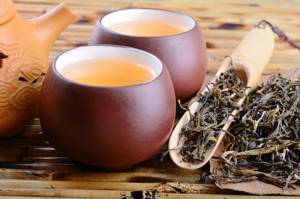
Invigorating component in tea
As in the situation with coffee, caffeine in tea is not a constant value and depends on the degree of processing of the tea leaves and the saturation of the finished drink. It does not matter that they were collected from the same bush. By the way, even leaves grown on the same plant contain different amounts of caffeine. The content of the chemical is maximum in the youngest leaves, as well as in the buds and first shoots, then it becomes less, and by the last harvest its value is only 1.5%.
Considering that young parts of bushes are used for elite varieties of tea, they contain the most caffeine; the worse the quality of the tea, the lower the content of the invigorating component.
Until recently, it was generally accepted that black varieties contained the most natural stimulants, that is, those that were fermented and have a tart, strong taste, rich color and aroma. However, scientists have found that the caffeine content in green tea without any additives is sometimes not much less.
Children under the age of three should not drink green tea; it is better to replace the drink with herbal infusion or berry juice.
The amount of the substance also directly depends on the duration of brewing tea. The longer you brew it, the more powerful the invigorating effect the drink has. But it is not recommended to brew tea leaves for too long, because oxidative processes occur in them, which reduces their taste and nutritional value.
If we look at the statistics, the largest amount of natural stimulant is contained in elite varieties of green tea - 75 mg in one cup. Black varieties, especially the leaves for which they are collected at the end of the season, contain several times less caffeine and other substances.
Soluble
In this case, everything depends on the specific manufacturer, brand and quality of the original raw materials. For this variety, inexpensive varieties are taken, and the grains themselves are selected smaller; substandard ones are often used. Different blends will also reduce the saturation, so for one cup of freeze-dried product the average will be 100 mg. But these figures contain an error factor, because on the market there are both very high-quality brands and outright imitation of natural products.
Where is there more caffeine?
Processed grains and leaves can have completely different effects on the body, depending on the presence of additional impurities and the individual characteristics of the person. Identical numbers on paper do not guarantee an identical effect, because the consumer’s reaction will depend on many factors. For example, brewing time, quantity of mixture and quality of product.
If we compare the amount of caffeine in tea and coffee, the second option will always be more saturated with invigorating microelements. If your goal is to quickly increase activity (physical and mental), then we recommend using a more intense option. To raise your tone for a long time, you can hold a tea ceremony. In addition, this minimizes the risk of exceeding the therapeutic norm.
Caffeine content in coffee
The amount of active alkaloid in coffee beans varies greatly, depending on the country of origin and the mineral composition of the soil in which the crop matured. Many factors have an additional impact on the strength of the finished drink in your cup.
- Type of coffee . Pure Arabica of South American origin has a fairly low caffeine content, only 45-60 mg of the substance per 170 ml of drink. The strength of Robusta is one and a half times higher. In the production of different brands, as a rule, a mixture of different grains, different in origin and grade, is used.
- Degree of grain roasting . The stronger the heat treatment, the higher the caffeine content in the finished drink. From light – Scandinavian, to dark – Mexican – the degree of substance content in grain can almost double. Therefore, espresso is always stronger; dark and very dark roasted beans are used for it.
- Naturalness . In instant ersatz, the caffeine content is lower. It is approximately 60 mg per 170 ml of liquid.
- Cooking method . When brewed in a Turk, the strength of the drink is not as high as when prepared by machine. In coffee makers and coffee machines, ground coffee undergoes long-term extraction, during which it manages to saturate the water to the maximum with taste, color, and active ingredients.
170 ml of coffee brewed from a mixture of medium and strong roast coffee beans contains approximately 115 mg of caffeine. Espresso is much stronger. 90 ml of this drink will provide us with 70-90 mg of alkaloid.
Conclusion
We have studied in detail all popular products containing elements that stimulate the nervous system. It is very important to control the level of their consumption and avoid significant overdose. You should study the effect of different types of products on your condition and draw up individual limits for consumption.
When calculating the average content, you can be guided by the table we provided above. However, it is worth taking into account the type, variety and quality of a certain brand, as well as the method and duration of brewing. Note that the caffeine in coffee and tea produces different effects in comparison. In the first case, the effect is short-term, but intense, and in the second, a much milder and longer-lasting effect is observed.
Don’t forget about the variety of actions in combination with additives and flavorings. They can either enhance or weaken the stimulating effect on the central nervous system.
Benefits of caffeine in tea
Caffeine has a stimulating effect on the human body, which in turn provides increased physical and mental performance. Caffeine perfectly invigorates, reduces fatigue and drowsiness, keeps the body in good shape, and can also lift your mood!
In reasonable amounts, caffeine can have health benefits . It promotes improved digestion and improved metabolism. These properties are enhanced when drinking drinks after dinner. That's why coffee, tea and other products that contain caffeine are present in the best diet programs for weight loss.
(c) Online tea store InTea.ru






